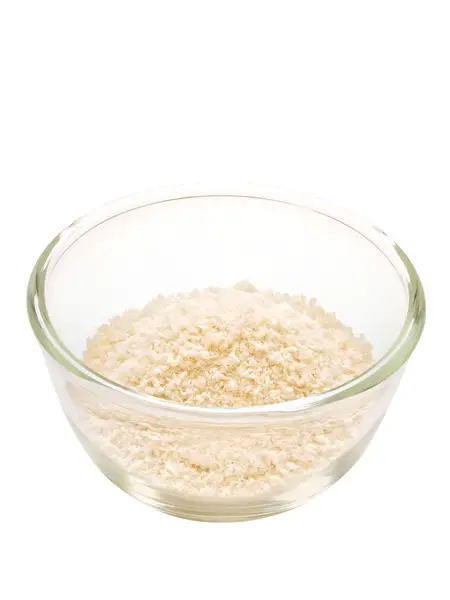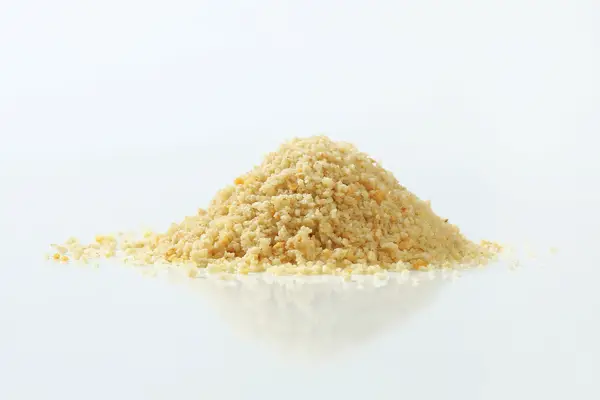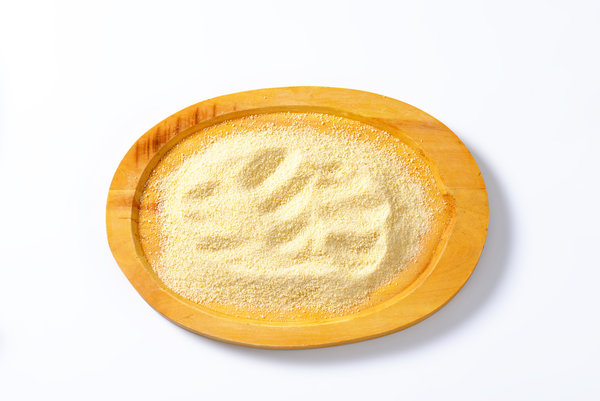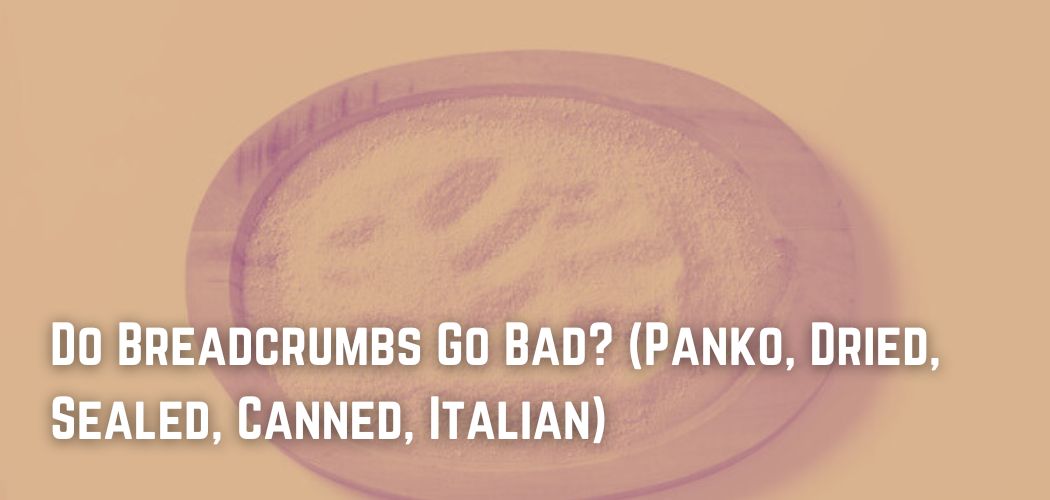Breadcrumbs are a pantry staple in many kitchens around the world. They are versatile ingredients that can be used in many different ways, from breading chicken to adding texture to meatballs or stuffing.
Breadcrumbs come in many forms, including panko, dried, sealed, canned, and Italian. While they are a convenient ingredient to have on hand, many people wonder if breadcrumbs can go bad.
In this article, we will explore whether or not different types of breadcrumbs can go bad, how to properly store them to extend their shelf life, and their pros and cons.
Contents
Do Panko Breadcrumbs Go Bad?
Panko breadcrumbs are a type of Japanese breadcrumb that is made from bread without crusts. They are light and crispy and are commonly used as breading for fried foods.
Panko breadcrumbs have a longer shelf life than regular breadcrumbs because they are less dense and have less moisture. If stored properly in an airtight container in a cool, dry place, panko breadcrumbs can last for up to six months.
Pros
- Light and airy texture, making them ideal for coating delicate foods like fish or vegetables.
- They absorb less oil when fried, resulting in a crispier, less greasy coating.
- They have a neutral flavor that won’t overpower the taste of the food.
Cons
- Panko breadcrumbs are typically more expensive than other types of breadcrumbs.
- They are not as versatile as other breadcrumbs and may not work as well for certain recipes.
Do Dried Breadcrumbs Go Bad?
Dried breadcrumbs are made by grinding dried bread into small pieces. They are commonly used in meatloaf, meatballs, and stuffing. Dried breadcrumbs can go bad if they are not stored properly.

Moisture is the enemy of dried breadcrumbs, so it is important to store them in an airtight container in a cool, dry place. If stored properly, dried breadcrumbs can last for up to six months.
Pros
- They are widely available and often the most affordable option.
- They have a long shelf life and can be stored for months without spoiling.
- They are versatile and can be used in a wide variety of recipes, including meatballs, meatloaf, and breading for fried foods.
Cons
- Dried breadcrumbs can be dense and heavy, making them less ideal for coating delicate foods.
- They don’t absorb as much liquid as fresh breadcrumbs, which can make them harder to work with in certain recipes.
Do Sealed Breadcrumbs Go Bad?
Sealed breadcrumbs are breadcrumbs that are sold in a vacuum-sealed bag or container. They are often found in the refrigerated section of the grocery store.
Sealed breadcrumbs have a longer shelf life than other types of breadcrumbs because they are vacuum-sealed, which prevents air and moisture from getting in. Sealed breadcrumbs can last for up to six months if stored in the refrigerator.
Pros
- They have a long shelf life and can be stored for months without spoiling.
- They are often made with high-quality ingredients, resulting in a better taste and texture.
- They come in a variety of flavors and styles, making it easy to find a type that works for your recipe.
Cons
- They are typically more expensive than other types of breadcrumbs.
- They may not be as widely available as other types of breadcrumbs.
Do Canned Breadcrumbs Go Bad?
Canned bread crumbs are breadcrumbs that are sold in a can or tin. They are often found in the baking aisle of the grocery store.
Canned bread crumbs have a longer shelf life than other types of breadcrumbs because they are canned, which prevents air and moisture from getting in. Canned bread crumbs can last for up to one year if stored in a cool, dry place.
Pros
- They have a long shelf life and can be stored for months without spoiling.
- They are often made with high-quality ingredients, resulting in a better taste and texture.
- They are convenient and easy to use, as they can be measured out and added directly to recipes.
Cons
- They can be more expensive than other types of breadcrumbs.
- They may not be as widely available as other types of breadcrumbs.
Do Italian Breadcrumbs Go Bad?
Italian bread crumbs are seasoned bread crumbs that are commonly used in Italian cuisine. They are made by combining breadcrumbs with herbs and spices like parsley, garlic, and oregano.

Italian breadcrumbs can go bad if they are not stored properly. Like dried breadcrumbs, moisture is the enemy of Italian breadcrumbs, so it is important to store them in an airtight container in a cool, dry place.
If stored properly, Italian breadcrumbs can last for up to six months.
Pros
- They have a distinct flavor that can add depth to recipes.
- They are versatile and can be used in a wide variety of recipes.
- They often contain seasonings like garlic and herbs, which can enhance the taste of the food.
Cons
- They may not be as widely available as other types of breadcrumbs.
- They may not work as well in recipes that don’t pair well with Italian flavors.
Breadcrumbs can go bad if they are not stored properly. Moisture is the enemy of breadcrumbs, so it is important to store them in an airtight container in a cool, dry place.
Panko breadcrumbs, sealed breadcrumbs, and canned bread crumbs have a longer shelf life than dried bread crumbs and Italian breadcrumbs because they are less dense and have less moisture.
If stored properly, breadcrumbs can last for up to six months to one year, depending on the type. It is important to check the expiration date on the package and to discard any breadcrumbs that have a rancid or off odor.
By following these simple storage tips, you can ensure that your bread crumbs stay fresh and flavorful for all of your culinary adventures.
Health Benefits Of Consuming Breadcrumbs In Moderation
Breadcrumbs are often used as a coating for fried or baked food, or as a thickener for soups and stews. While they may not be the most nutritious food on their own, they do offer some health benefits when consumed as part of a balanced diet.
- Rich in carbohydrates: Breadcrumbs are a rich source of carbohydrates, which provide energy to the body. They can be especially beneficial for athletes or individuals who engage in high-intensity physical activity.
- Source of fiber: Breadcrumbs can be a good source of dietary fiber, which is important for maintaining digestive health. Fiber helps to promote regularity and can prevent constipation.
- Low in fat: Depending on the type of breadcrumbs, they can be low in fat, which makes them a good option for individuals who are watching their fat intake. However, it’s important to note that breadcrumbs that have been used to coat and fry food will contain more fat than plain breadcrumbs.
- Contains vitamins and minerals: Breadcrumbs contain some vitamins and minerals, including iron, calcium, and zinc. While the amounts may be small, every little bit helps when it comes to meeting daily nutrient needs.
- Gluten-free options available: For individuals who are gluten intolerant or have celiac disease, there are gluten-free breadcrumb options available that can be used in place of traditional breadcrumbs.
It’s important to note that while breadcrumbs can offer some health benefits, they should be consumed in moderation as part of a balanced diet.
Breadcrumbs that have been used to coat and fry food will be higher in calories, fat, and sodium, so it’s best to use them sparingly. Additionally, individuals who are trying to lose weight or manage their blood sugar levels may want to limit their intake of breadcrumbs.
Risks Associated With Them
While breadcrumbs can provide some health benefits, overconsumption can have negative effects on the body. Here are some possible side effects of overconsuming breadcrumbs:
- Weight gain: Breadcrumbs are high in calories and carbohydrates, so consuming large amounts of them regularly can lead to weight gain.
- Digestive issues: Breadcrumbs can be difficult to digest for some people, especially if they have gluten intolerance or celiac disease. Overconsumption of breadcrumbs can cause digestive problems such as bloating, gas, and constipation.
- Blood sugar spikes: Breadcrumbs have a high glycemic index, which means they can cause a rapid increase in blood sugar levels. Overconsumption of breadcrumbs can lead to spikes in blood sugar, which can be harmful for people with diabetes.
- Nutrient deficiencies: Breadcrumbs are not a good source of nutrients and can displace other nutrient-rich foods in the diet. Overconsumption of breadcrumbs can lead to nutrient deficiencies, particularly if they are used to replace other more nutritious foods.
- Allergic reactions: Breadcrumbs contain gluten, which can trigger allergic reactions in people with gluten intolerance or celiac disease. Overconsumption of breadcrumbs can increase the risk of allergic reactions and worsen symptoms in people with these conditions.
Overall, while breadcrumbs can be a useful ingredient in many recipes, it is important to consume them in moderation and to choose high-quality, whole grain bread crumbs whenever possible to maximize their nutritional value.
Nutritional Content
The nutritional content of breadcrumbs can vary depending on the type and brand. Here is a general overview of the nutritional content of plain, unseasoned breadcrumbs:
- Calories: 100-120 per 1/2 cup
- Protein: 3-5 grams per 1/2 cup
- Carbohydrates: 20-25 grams per 1/2 cup
- Fat: 1-2 grams per 1/2 cup
- Fiber: 1-2 grams per 1/2 cup
- Sodium: 200-300 milligrams per 1/2 cup
Breadcrumbs are not considered to be a significant source of vitamins or minerals. However, some brands may fortify their breadcrumbs with additional nutrients such as iron or folic acid.
Ideal Consumption
The ideal consumption of breadcrumbs depends on individual dietary needs and goals. As a general guideline, it is recommended to consume breadcrumbs in moderation as a part of a balanced diet.
For individuals with no dietary restrictions, a serving size of 1/4 cup of breadcrumbs can provide a small amount of carbohydrates, fiber, and protein. However, it is important to keep in mind that breadcrumbs are typically high in calories and sodium, so it is best to use them sparingly.

For individuals with dietary restrictions or health concerns, such as those with gluten intolerance or high blood pressure, it may be necessary to avoid or limit the consumption of breadcrumbs altogether.
It is also important to note that the nutritional content and ideal consumption of breadcrumbs may vary depending on the type of breadcrumbs, as well as the preparation and cooking methods used.
Conclusion
Breadcrumbs can add flavor, texture, and nutrition to various dishes. Panko, dried, sealed, canned, and Italian breadcrumbs are the most commonly used types.
Each type has its pros and cons, and the choice depends on personal preferences and the dish being prepared. Breadcrumbs can offer various health benefits such as increased fiber intake, better digestion, and a boost in energy.
However, overconsuming breadcrumbs can lead to unwanted side effects such as weight gain and blood sugar spikes.
Overall, breadcrumbs can be a tasty and healthy addition to any diet when consumed in moderation and with a balanced approach.

